The Reiki Digest for May 9, 2007: Spring Revue of Reviews -- Part 1
Spring has sprung here at The Reiki Digest world headquarters, and that means it's time for a special issue: our Spring Revue of Reviews. Whether you're reading this on the web site or by e-mail, you might notice that we've done some seasonal redecorating, and we hope you like the new look. Please tell us what you think by sending an e-mail to editor@thereikidigest.com.
Our spring collection of reviews is eclectic, not comprehensive. These are just some of the books and other products we've had a chance to look at since last December's Year-end Revue of Reviews. Some are specifically about Reiki; others aren't. We have so many reviews, in fact, that in order to leave you some time to read something besides this week's Digest, we're breaking the Spring Revue into two parts.
We begin with a review of the Reiki book of the year (so far): Your Reiki Treatment by Bronwen and Frans Stiene. Since our original review was published here last December, months before the book came out, we're reprinting it here:
Your Reiki Treatment
Bronwen and Frans Stiene
O Books (2007)
reviewed by Janet Dagley Dagley
Once again, prolific authors and Reiki Master Teachers Bronwen and Frans Stiene of the International House of Reiki have outdone their previous outstanding efforts. This time it's Your Reiki Treatment, their first book about Reiki aimed at clients rather than practitioners. In fact, it's the first book written specifically for Reiki recipients.
With the reverberations of their groundbreaking first book, The Reiki Sourcebook (2003), still rippling through the Reiki world, the Stienes went on to write The Japanese Art of Reiki (2005), a practical, illustrated guide focused on the roots of Reiki as well as its foundation: self care. In 2006 they followed up with two publications: the A-Z of Reiki, a handy guide to all things Reiki in a book the size of a deck of cards, and an actual deck of cards, the lovely and very useful Reiki Techniques Card Deck (which includes an illustrated booklet as well.)
In Your Reiki Treatment, Bronwen and Frans have topped all that off with a thoughtful, graceful distillation, blending their impeccable and extensive research with insights and anecdotes drawn from their years of experience as Reiki practitioners and teachers.
Your Reiki Treatment rightly envisions the reader as a potential Reiki client who isn't so interested in the name of the founder or the practitioner's lineage or how many branches of Reiki there may be. Potential clients, i.e., everybody on the planet who hasn't already received a Reiki treatment, just want to know what Reiki is and what it might do for them -- or to them. If you're one of those potential Reiki clients, this book will satisfy your curiosity, though not as well as an actual Reiki treatment, of course!
I plan to keep a copy or two in my office to lend to potential Reiki clients, and I can envision a lot of other practitioners doing the same. If you know someone who's curious about Reiki, show them this book and you may end up with a new client.
Study with the International House of Reiki in New York: After the success of last month's sold-out Shinpiden (Master/Teacher level) class in New York, sponsored by The Reiki Digest, Frans Stiene has agreed to come back to the Big Apple October 19, 20, and 21 for another three-day Shinpiden class PLUS a special one-day advanced workshop October 22 open to all Shinpiden graduates. Click here for more information.
...
The Joy of Living
Yongey Mingyur Rinpoche
Harmony Books (2007)
reviewed by Janet Dagley Dagley
If you meditate, you need to read this book. If you're curious about meditation, you need to read this book. If you'd like to meditate but just can't seem to get around to it, or if you've tried to meditate but it didn't seem to work for you, you really need to read this book. And if you DON'T meditate, then you're not really a Reiki practitioner, no matter what it may say on your certificate(s).
Perhaps you've heard of the groundbreaking experiments carried out some years ago by the University of Wisconsin, in cooperation with the Dalai Lama, in which researchers measured the brain waves of meditating monks. Yongey Mingyur was one of those monks, and since that experience as a test subject, he has continued to focus on the intersection of spirituality and science. In case you aren't familiar with those experiments, the University of Wisconsin's Waisman Laboratory for Brain Imaging and Behavior hooked up Yongey Mingyur and other monks, as well as test subjects with little or no experience with meditation, to advanced electroencephalographs (EEGs) and a special kind of MRI (magnetic resonance imaging) that measured brain changes moment-by-moment. At first the monks' EEG readings were so far off the scale that the researchers had to double-check their equipment to make sure it wasn't malfunctioning. It wasn't. During a meditation on compassion, for example, the monks' neural activity in a key center in the brain's system for happiness rose 700 to 800 percent (that is not a typo: seven HUNDRED to eight HUNDRED percent!) Even the inexperienced meditators' brains registered a 10 to 15 percent increase in the same brain area. So when Yongey Mingyur writes about "joy" -- he's proven scientifically that he knows what he's talking about.
Like any of us, however, monk or not, Yongey Mingyur has also experienced some feelings that no one would call "joy." From early childhood he experienced severe panic attacks, and although he tried to use meditation to counter them, his anxieties grew into full-blown panic disorder. (Yes, those things can happen to anybody, even those meditating in caves, even those who have been identified from childhood as the reincarnations of legendary Tibetan Buddhist masters, even those who are the children of legendary Tibetan Buddhist masters.)
While Yongey Mingyur acknowledges his own problems in this book, he doesn't dwell on them, focusing instead on how he learned to deal with them, and how the rest of us can do the same.
By the way, the same lab that did the study involving Yongey Mingyur made headlines again this week with a new meditation study published May 8. This time, the University of Wisconsin, in conjunction with researchers from the University of Arizona and Leiden University in The Netherlands, tested both experienced meditators and novices and found that meditation helped prevent "attentional blink" syndrome, in which a person notices the first target item presented but doesn't notice a second "target" presented immediately afterward in a rapid stream of information. The more experience test subjects had in meditating, the less likely they were to miss the second target item. Those latest findings serve as yet another endorsement of The Joy of Living, not to mention meditation training for anybody who doesn't want to miss key information.
...
The Universe in a Single Atom
His Holiness the Dalai Lama (Tenzin Gyatso)
Morgan Road Books (2005)
reviewed by Janet Dagley Dagley
So far, I haven't found any books by the Dalai Lama that I wouldn't recommend, but this one resonated even more deeply for me because it addresses one of my favorite subjects: as the subtitle puts it, "The convergence of science and spirituality." Looking at that intriguing intersection from the Dalai Lama's point of view is even more fascinating, especially since he writes in such a personal, accessible way. Having been enthroned at age six as the 14th Dalai Lama, he received the best education Tibet had to offer in "reading, writing, basic Buddhist philosophy, and the memorization of scriptures and rituals," he writes, but he learned nothing of math and science. "I did not even know they existed." Yet he was fascinated by things technological: he taught himself to repair the previous Dalai Lama's old wristwatch and went on to repair watches as a hobby. And one night when he sneaked out to drive one of the three automobiles in all of Tibet and crashed it, he put everything back together so well that no one seemed to notice. When he was first exposed to science as a teenager on his first journeys outside Tibet as head of state, he applied that same curiosity and resourcefulness. Being the Dalai Lama, he had an all-star cast of teachers, including other heads of state, famed philosophers, physicists, and many other experts. In this book he distills all that, and the conclusions he has drawn from his singular education, to show us how science and spirituality, along with everything else in the universe, fit together perfectly. That duality, too, turns out to be just an illusion.
Also by the Dalai Lama, also recommended: How to See Yourself as You Really Are (Atria Books, 2006)
Tarot for the Curious Spirit: Awakening the High Priestess Within
O Books (2007)
reviewed by Nicholas Sweeney
Barbara Venn-Lever has written a wonderful Tarot book for the beginning student of the Tarot. In the preface to the book, she writes:
“In a grounded, yet spiritually exciting process you will learn the rudiments of the tarot. There will be helpful charts and drawings, layouts and spreads along with food for your Soul. This book is a process, which once begun, will assist you on your personal pathway and will assist the questing and growing self to open to the mysteries of Universal Truth.”
The rest of the book lives up to this introduction. The author’s style was professional, practical, grounded, and simple, yet at the same time, she communicates the depth and magic inherent in the Tarot.
As with most books on the Tarot, this book includes a brief history of the Tarot’s obscure origins, a discussion of the overall structure of the Tarot deck, interpretations of the Minor Arcana, Major Arcana, and court cards, a section describing a few simple spreads to begin working with, and some professional tips to get you started giving Tarot readings for others. No Tarot book would be complete without this basic information, and the information here is quite functional and easy for the beginner to follow.
What gives this book its unique flavor, however, is the addition of a series of end-caps for each chapter that the author calls “Wordplay.” After each chapter, the author lists a few words from the chapter, along with some of her own personal definitions and associations. This word play is meant to inspire the reader to connect to the meaning behind the words in new and creative ways. I felt it was a great tool that helped me to open my mind to a place of new ideas and possibilities while working with the tarot. That is the author’s intention. In fact, throughout this book, I was surprised by new yet simple ways of thinking about the cards. The beginning Tarot student as well the more experienced Tarot enthusiast will find this aspect of the book to be very rewarding.
I had been considering which Tarot book I would use to begin teaching a beginner’s Tarot class, and I have found it. It can be difficult to find books on the Tarot that are good at guiding the beginner into the more intuitive and spiritual nature of the Tarot while keeping his or her feet on the ground. Barbara Venn-Lever does a beautiful job of blending the practical and the profound. I highly recommend this book for those who are beginning to use the Tarot as a guide as they journey into the mysteries of the soul. I leave you with another quote from the author:
“…There will come a time when our Spirit calls and we become inquisitive and eager to know about our life purpose, the Universe and the mysteries which fill it. We become spiritually curious. It is then that the archetypal High priestess within steps to the fore and bids us to welcome her qualities…”
...
Stay tuned for Part 2 next week. We'll save the Reiki Roundup and other regular features until later as well. Meanwhile, The Reiki Digest Special Correspondent Michelle Shinagawa has posted another chapter in the story of her trip to Japan. If you're one of the many who dream of someday visiting Mt. Kurama, or just wonder what it might be like, you'll want to read her post.
NEW! The New York Reiki Dojo opens next week! Drop in for our new weekly practice sessions, open to all! Tuesday, May 15 and May 22 from 7 to 8 p.m., and then every Tuesday beginning in June. Enjoy a relaxing meditation, meet other Reiki aficionados, and experience the "energetic blessing" of traditional reiju, and more. Chelsea Studios, 151 W. 26th St., New York, New York. Sponsored by The Reiki Digest and the International House of Reiki and hosted by graduates of the International House of Reiki Shinpiden class. For more information, e-mail editor@thereikidigest.com with the word "DOJO" in the subject line. $10 donation requested to cover space rental.











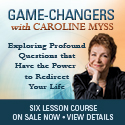






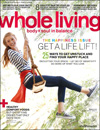
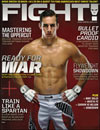
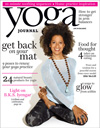
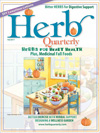
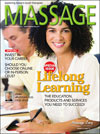
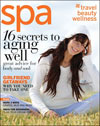
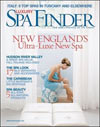
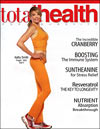
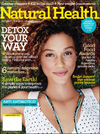





0 Comments:
Post a Comment
<< Home